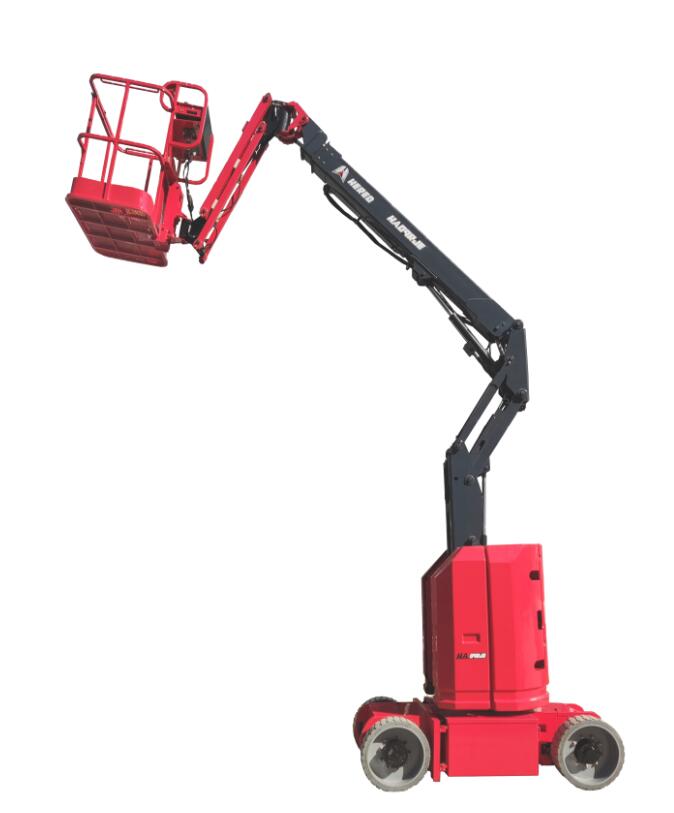What is the Difference Between Articulating Lift and Boom Lift?
When it comes to accessing elevated areas on construction sites or conducting maintenance tasks at height, having the right equipment is essential. Articulating lifts and boom lifts are two popular options that provide efficient and safe solutions for working at elevated heights. While both types of lifts serve a similar purpose, they have distinct features that set them apart. In this article, we will explore the key differences between articulating lifts and boom lifts to help you make an informed decision about which one is best suited for your specific needs.
Articulating lifts, also known as knuckle lifts or cherry pickers, are versatile aerial platforms that offer excellent maneuverability and flexibility. These lifts are equipped with multiple hinged sections that allow for precise positioning in tight or confined spaces. The main advantage of an articulating lift is its ability to reach up and over obstacles, making it ideal for tasks that require access around obstacles or overhead structures.
Articulating lifts typically have a lower vertical reach compared to boom lifts, ranging from 30 to 130 feet. However, their maximum horizontal outreach can often exceed 60 feet, making them highly suitable for tasks that require access to hard-to-reach areas such as building facades, bridges, or tree trimming.
These lifts feature articulated booms that can be maneuvered vertically and horizontally, providing increased flexibility for operators. The articulating joints enable precise positioning, allowing workers to reach areas that would otherwise be difficult to access. This versatility makes articulating lifts a preferred choice for tasks that involve complex or irregularly shaped work areas.

2. Boom Lifts
Boom lifts, also referred to as telescopic or straight boom lifts, are renowned for their impressive vertical reach and stability. These lifts are equipped with a single extendable arm, known as a boom, that can reach great heights while maintaining stability. Boom lifts are commonly used in construction, maintenance, and firefighting applications.
One key advantage of boom lifts is their exceptional height capabilities, ranging from 40 to 180 feet. This makes them the go-to choice for tasks that require vertical access to higher elevations, such as installing or repairing electrical lines, window cleaning on high-rise buildings, or conducting maintenance work on stadiums or large structures.
Unlike articulating lifts, boom lifts have limited flexibility in terms of horizontal outreach. They are better suited for tasks that involve accessing vertical areas without obstacles or obstructions. The stability of boom lifts, especially when fully extended, ensures a secure and reliable platform for workers to operate from.
3. Factors to Consider
When deciding between an articulating lift and a boom lift, several factors should be taken into consideration:
a) Task Requirements: Assess the nature of the job you need to complete. If your task involves accessing hard-to-reach areas or maneuvering around obstacles, an articulating lift would be more suitable. On the other hand, if you primarily require vertical access to high elevations without obstacles, a boom lift might be the better choice.
b) Work Environment: Evaluate the work environment and space limitations. Articulating lifts excel in confined spaces and areas with restricted access, thanks to their versatility and maneuverability. Boom lifts, with their impressive height capabilities, are better suited for open spaces and areas where vertical reach is the primary concern.
c) Weight and Capacity: Consider the weight of workers, tools, and materials that need to be lifted. Both articulating lifts and boom lifts have weight and capacity limitations, so ensure that the lift you choose can safely accommodate the load required for your specific task.
d) Budget and Cost: Determine your budget and evaluate the costs associated with renting or purchasing either type of lift. Prices may vary depending on factors such as lift height, reach, and additional features. Consider the long-term benefits and return on investment when making your decision.
Conclusion
In summary, articulating lifts and boom lifts offer distinct advantages based on the specific requirements of your project. Articulating lifts provide enhanced maneuverability and flexibility, making them suitable for tasks that involve navigating around obstacles. Boom lifts, on the other hand, excel in providing impressive vertical reach for accessing high elevations without obstructions.
By understanding the key differences between articulating lifts and boom lifts, you can make an informed decision that aligns with your project's needs, ensuring efficient and safe operations at elevated heights.

Comments
0